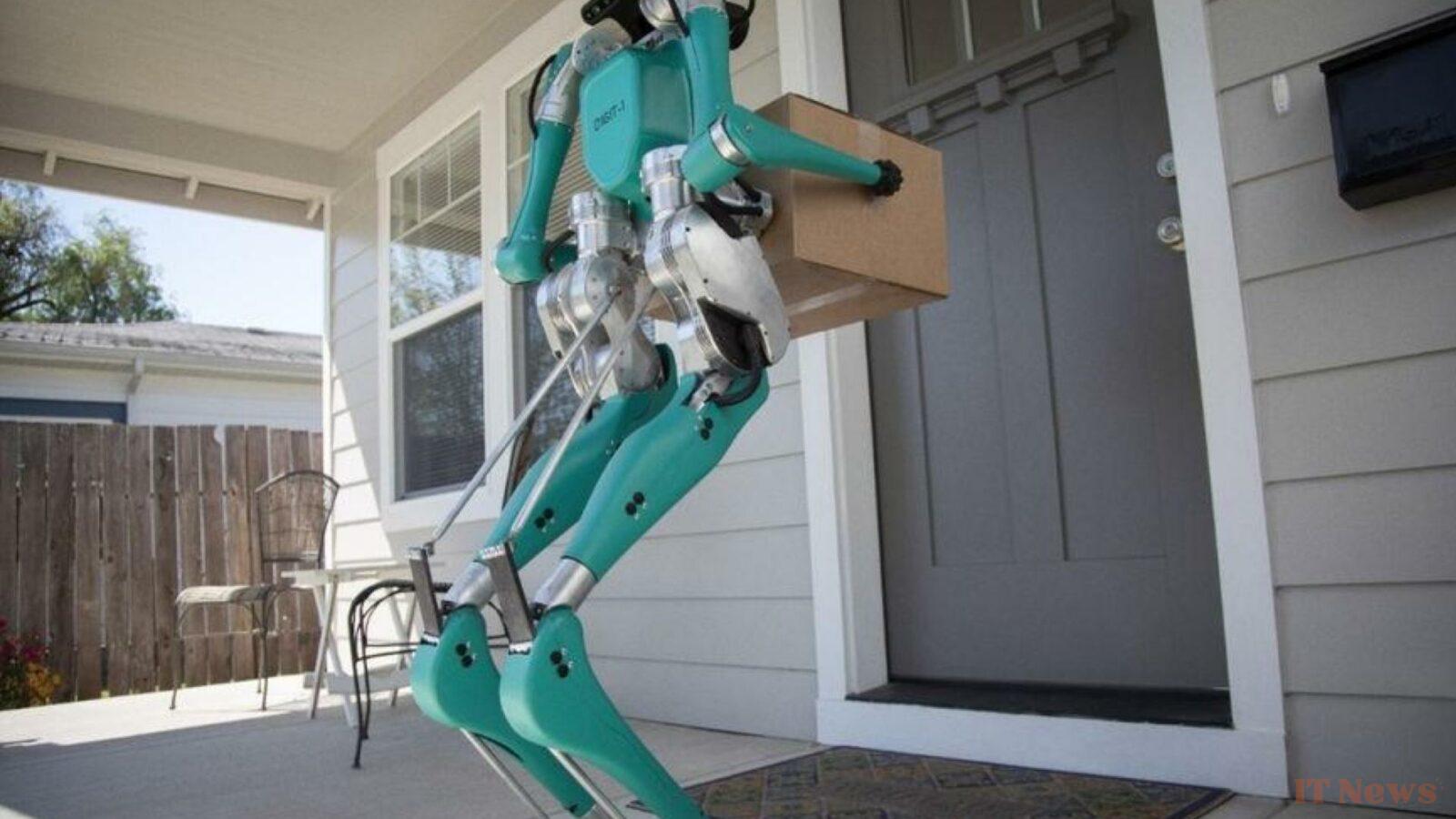For the past ten years, Amazon has been making significant efforts to launch its famous aerial delivery program using autonomous drones – with rather mixed results, and far from the initial promises. Today, it's clear that this concept has not led to the logistics revolution promised by Jeff Bezos in 2013. But the industrial giant hasn't said its last word: it still aims to send robots to deliver your packages... but these could now be bipeds instead of quadcopters.
The identity of the robots in question does not appear to have been confirmed at this time. However, we do know that Amazon has already established a partnership with the American company Agility Robotics, which produces an android called Digit. The latter has already been tested in Amazon warehouses for about two years, and is therefore the ideal candidate for this new position.
With the humanoid robot Digit, Amazon is betting on human-robot collaboration
A “humanoid park” to test delivery robots
But getting a robot out of a highly controlled environment like a sorting center is no easy feat. In an outdoor environment, these machines will face a host of obstacles and unforeseen events that will significantly complicate their missions.
According to The Information, Amazon has therefore begun building what it describes as a “humanoid park” to prepare these cyber-employees. According to the American media, it's a sort of obstacle course specifically designed to test a host of potentially problematic scenarios.
Once these robots are deemed sufficiently mature, Amazon plans to take some of them on "excursions" to test them in real-life conditions.
Not entirely autonomous delivery drivers
Indeed, the goal is not to have them travel alone from a sorting center to the customer's home. In practice, they will behave more like cyber-colleagues for real-life employees. They will still drive a van loaded with packages, but they will also have one (or more) robots on board that, once they reach their destination, will be able to exit the vehicle to bring the ordered products to the recipient's door.
The report from The Information does not specify, however, whether humans will continue to make deliveries in parallel, or whether they will become more of a driver and manager of robots than a delivery person per se.
But in any case, this shows that Amazon remains very invested in its project to automate as many deliveries as possible. It will be very interesting to follow the results of this pilot program, because if successful, these bipedal robots could finally mark the beginning of the great paradigm shift that quadcopters were supposed to initiate.



0 Comments